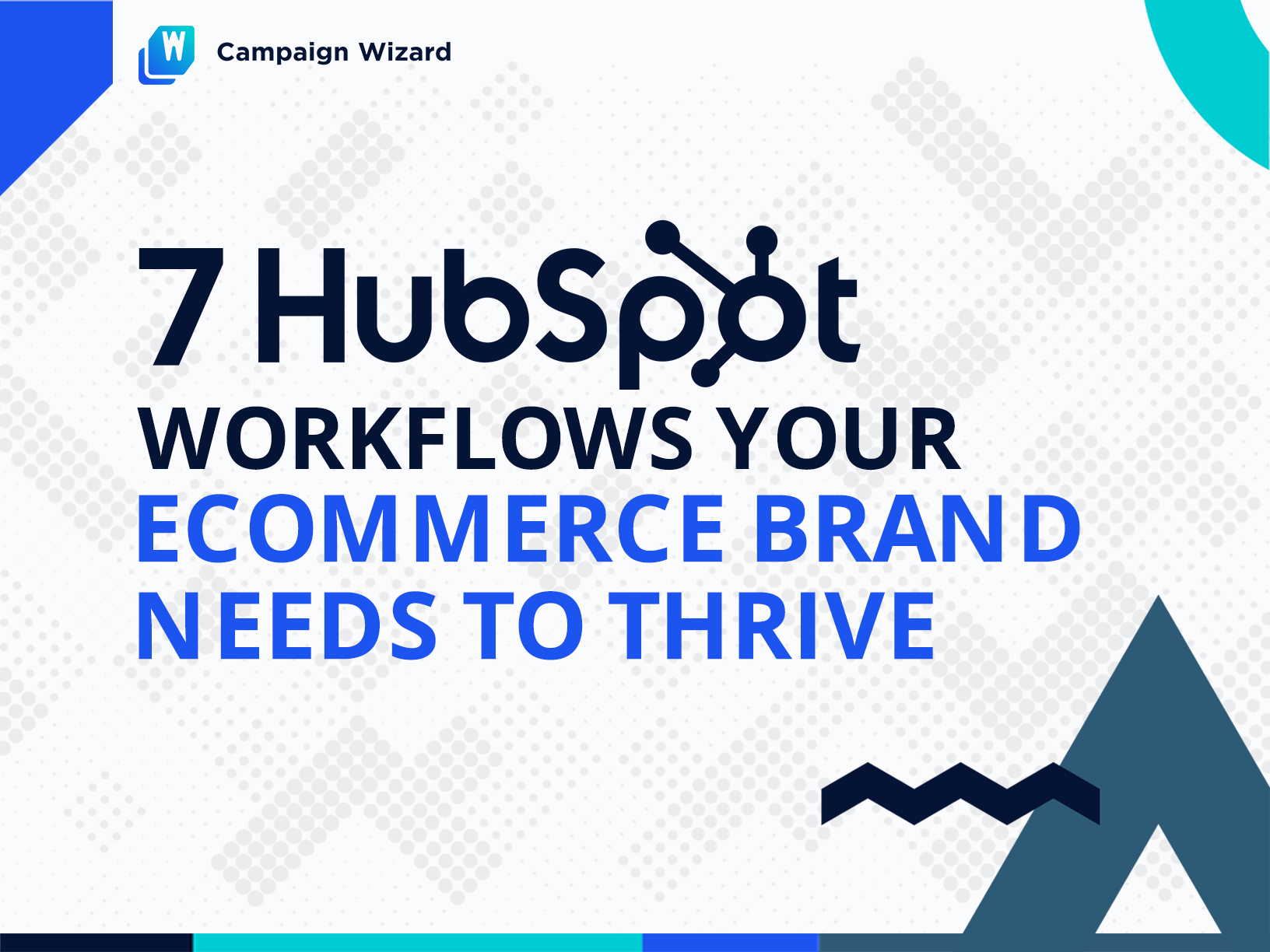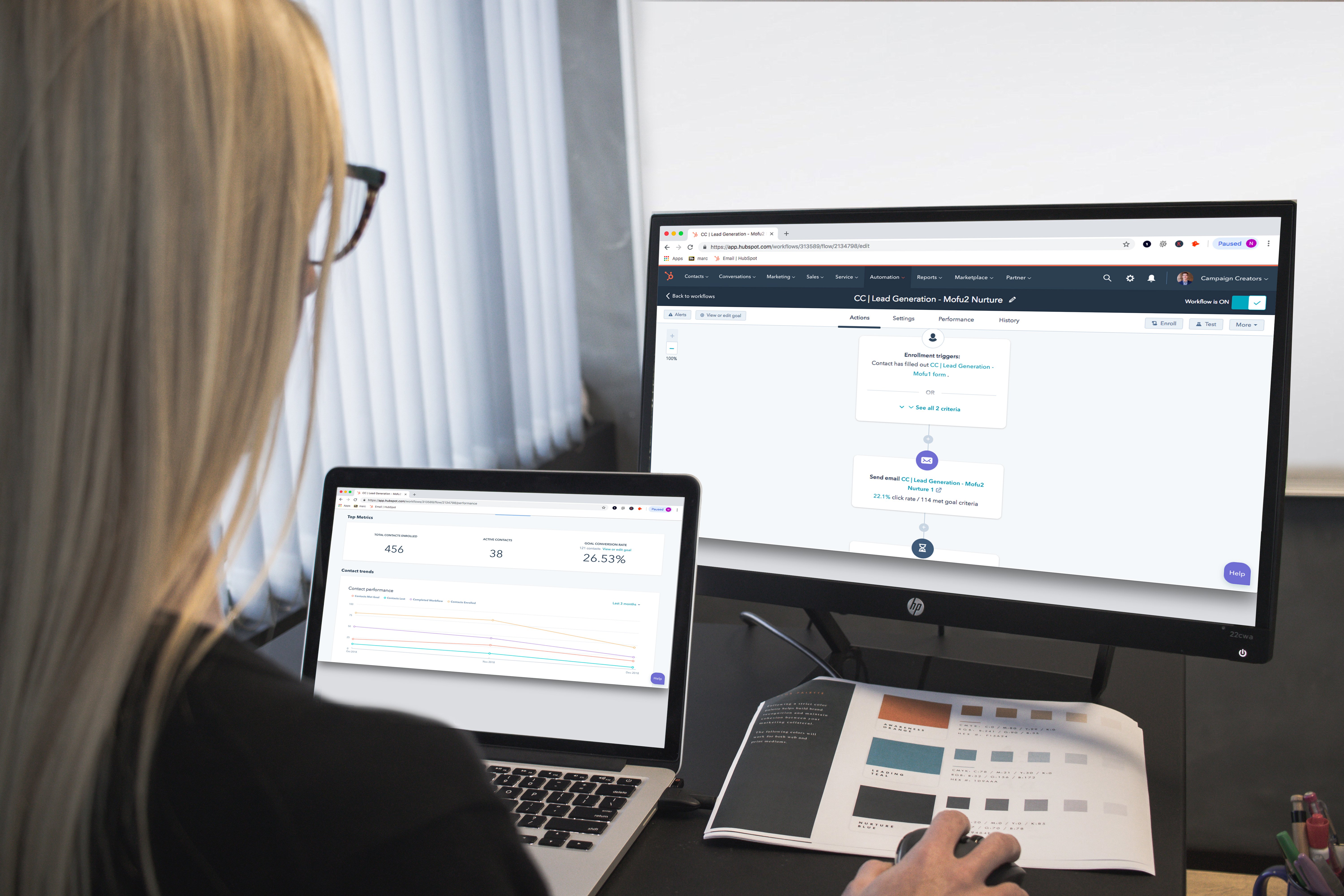Are your prospects and customers sitting untouched in your database? Could you be relying on too many manual touchpoints in your eCommerce marketing infrastructure? Don't fret, these are issues every organization faces to a certain degree.
If you’re a HubSpot user, you’re surely aware of the Workflow module. Depending on your technical expertise and day-to-day bandwidth, you might not be taking full advantage of the automation capabilities that can really crank the dial on your marketing activities.
It goes without saying that turning prospects into customers and turning customers into advocates is the lifeblood of an eCommerce brand.
Not everyone is a HubSpot wizard, so we’re covering the seven essential workflows that you can build in your portal to inject some automation throughout the whole funnel.
Here's the complete list of workflows covered in this article:
- Welcome Series Workflow
- Abandoned Cart Workflow
- Re-engagement Workflow
- NPS/CSAT Workflow
- Post-Purchase Workflow
- Internal Team Notification Workflow
- Buying Reminder / Subscription Workflow
1. welcome series workflow
Welcoming new users is imperative in today’s landscape. Although shoppers in today’s world are bombarded with their favorite brand’s emails, you can’t bypass saying “hello” to them.
If someone signs up for a newsletter, discount, or future outreach from your brand, you’re expected to reach out to them. The “welcome series” is your chance to start forming a relationship with a future customer and really let them know what you’re all about.
Don’t underestimate how important that first touchpoint is. Stay on-brand and think hard about how you can stand out from all the other emails flooding your prospect’s inbox.
The primary objective of this campaign is to build rapport with the subscriber. A simple welcome email will give them a sense of what to expect, perhaps your “mission statement”, or the “why we do what we do”.
The next emails can include more helpful content based on their journey to your brand. You might toss in a time-sensitive discount to give them an incentive to make a purchase. Based on that offer, one or two more emails mentioning that “time is running out!” is currently standard practice.
We can all envision the cadences and messages we receive from our most cherished brands.
Once the “welcome series” is complete, go ahead and add them to a static list in HubSpot. This will allow you to keep track of them for future outreach. If they do happen to make a purchase, their lifecycle stage will move from “Lead” to “Customer”. And those two segments can be attacked with different strategies.
Enrollment triggers: Form fill, Page visit, Subscriber list
2. Abandonment CART Recovery Workflow
Losing customers hurts. Especially if it’s to a competitor. Brands can’t be afraid to include some omnichannel initiatives in their marketing strategy.
We all know the drill. You’re close to making a purchase, but can’t quite pull the trigger. Low and behold, that item is following you around across the whole worldwide web. We might not be far from advertisers being able to hop into your dreams for a low enough CPC.
But, we can’t deny the effectiveness of these campaigns. If someone abandons their shopping cart, we can’t merely give up on them. That’s why we build full campaigns around it and make sure we’re constantly optimizing them to convert.
Most eCommerce businesses and brands have witnessed a staggering 70 percent shopping cart recovery rate after implementing such a workflow.
The amazing part about today’s marketing automation capabilities is after the campaigns are live, you don’t have to do anything! You can set parameters and time delays to stay top of mind for these folks that got oh-so-close to making a purchase.
By making use of a smart list for shopping cart abandonment and an integrated shopping cart, you can automate personalized emails to specific prospects who have abandoned their shopping cart. Over the following few days, until the consumer converts to your user-action goal list, you should reach out with tailored emails to remind the individual of their product/service selection.
Moreover, it is also best to offer a small discount to incentivize the customer and via integrated forms, give an easy link back to their online shopping cart. Test out varying offers to see which seems to entice the most.
Enrollment triggers: Added item to cart, Visited check-out URL
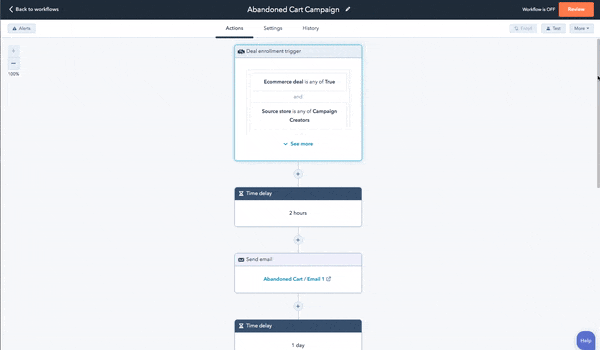
Want To Launch HubSpot Campaigns Faster And Easier? Check Out Our Line Of Campaign Wizard Products That Are Made Exclusively By Us For Marketers.
3. Re-engagement workflow
Don’t lose hope if your leads or prospects have not been engaging with you for a considerable amount of time. It might owe to the fact that they are waiting for some lucrative product deals from you, or... maybe they have completely forgotten you. Just kidding!
Keep in mind that it is primarily your responsibility to stir up interest or offer them an incentive that they just can’t resist. Then, they will be drawn back to you! Loyalty today is hard to come by. There are simply too many options when it comes time to make a purchase.
You can construct a HubSpot workflow targeted towards cold leads and prospects by figuring out what could be the chief reasons they left you or are not interacting with you anymore. When a particular amount of time goes by since they carried out their last activity (like form submission, email open, form visit, and so forth), trigger this re-engagement workflow to ignite a response.
Oftentimes, using the HubSpot property field “Last Contacted” is the best enrollment trigger for these workflows. Depending on the average sales cycle in your business, 30/60/90 days are solid staples to center these campaigns around. If you look at your favorite personal brands for inspiration, you’ll start to see a common rhythm to how and when they reach out.
What you first need to do is identify the dormant and inactive leads. The next step is to update your email preferences, offer enticing coupons, and freebies to these individuals based on their previous website activities and purchases.
Re-engagement workflows also work well around new product launches. It’s always a good idea to reach out to your brand advocates for campaigns like this.
Enrollment triggers: Last date contacted, Last email open date, Last purchase date
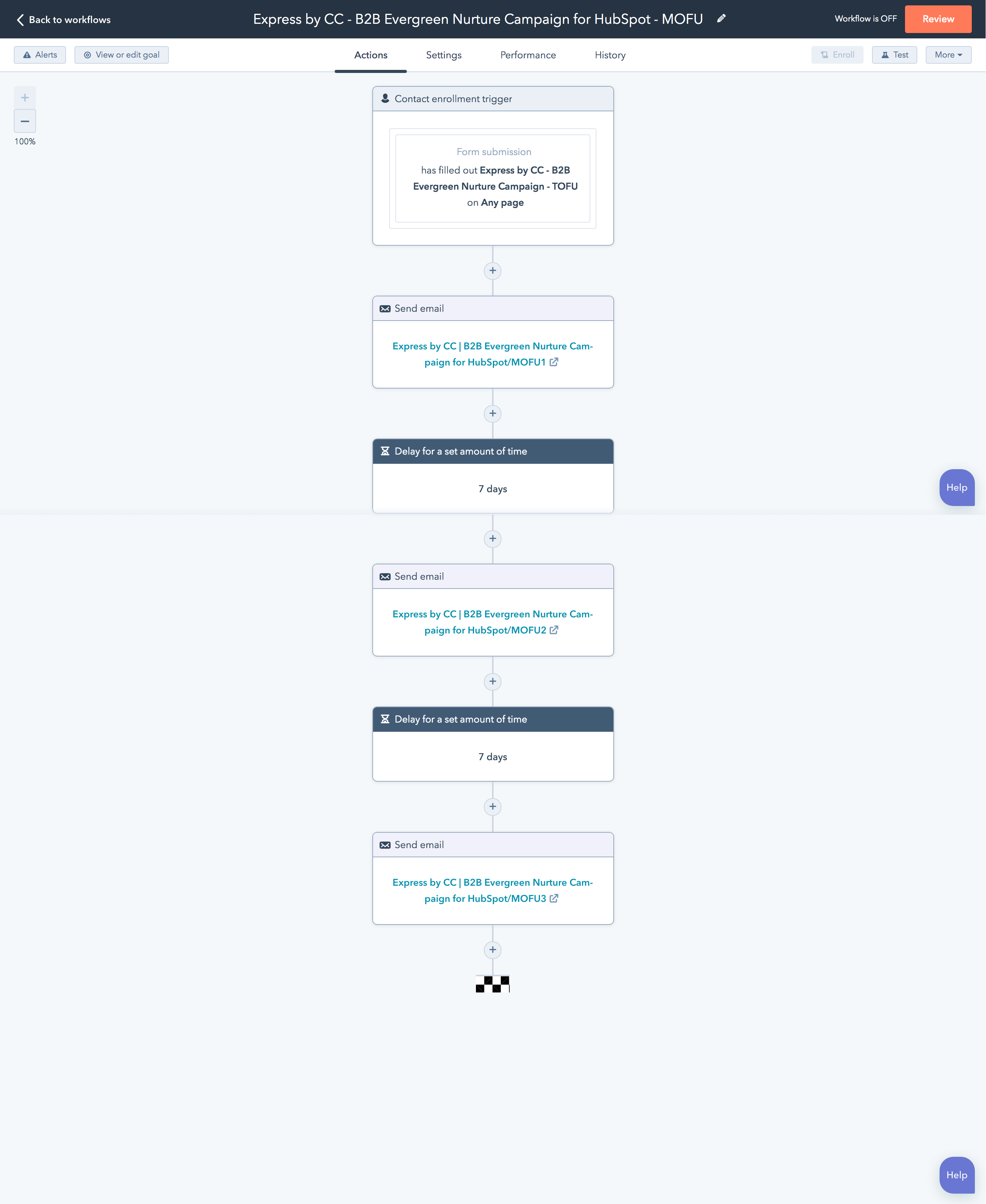
4. Customer satisfaction workflow
Establishing an NPS (Net Promoter Score) framework requires an entire article of its own. But we can help navigate the seas of customer satisfaction by implementing workflows to create and measure this critical KPI.
NPS has always been important but seems to have gained serious traction over recent years. If you’re using HubSpot’s Service module, you know that NPS is already built into its functionality. If you’re not, no worries. There are plenty of cost-effective tools to monitor customer satisfaction through well-timed surveys.
Some examples might include:
- How easy was it to complete your purchase?
- How was our customer support team?
- Were you looking for anything that you couldn’t find?
- Was there anything we could have done better?
You get the idea. And make sure to ask the most important questions for your brand. Don’t just collect data for the fun of it. Turn the responses into actionable items.
Knowing your advocates is just as important as knowing your detractors. Sure, you will be able to tap into your most loyal customers to generate more revenue. But, you can also learn a lot from people unhappy with your brand. This will provide valuable insight into changes that can be made to strengthen your relationship with current and future customers.
Once your data is segmented into what we’ll call “happy” and “unhappy” customers, you can trigger separate actions.
Establish a happy customer list by setting a threshold to identify the ideal consumer score. With a filtered consumers list, implement workflow for content customers, and offer exclusive rewards, offers, and relevant content.
Trigger another workflow for unhappy consumers. It holds offers or content focused on boosting the customer’s overall experience. Be sure to clearly address all reasons as to what makes your consumers feel dissatisfied. List these reasons and customers, and eventually empty out this list by converting all your unhappy customers to happy ones.
If your team has the bandwidth, it might be worthwhile to reach out directly to some of the low scores. Go the extra mile to enhance your overall customer experience.
Take a look at what the industry giants do. They bend over backward to make even the “smallest” customer feel like their voice is being heard. Aim to achieve the same.
Enrollment triggers: NPS or CSAT scores (build two workflows for low and high scores)
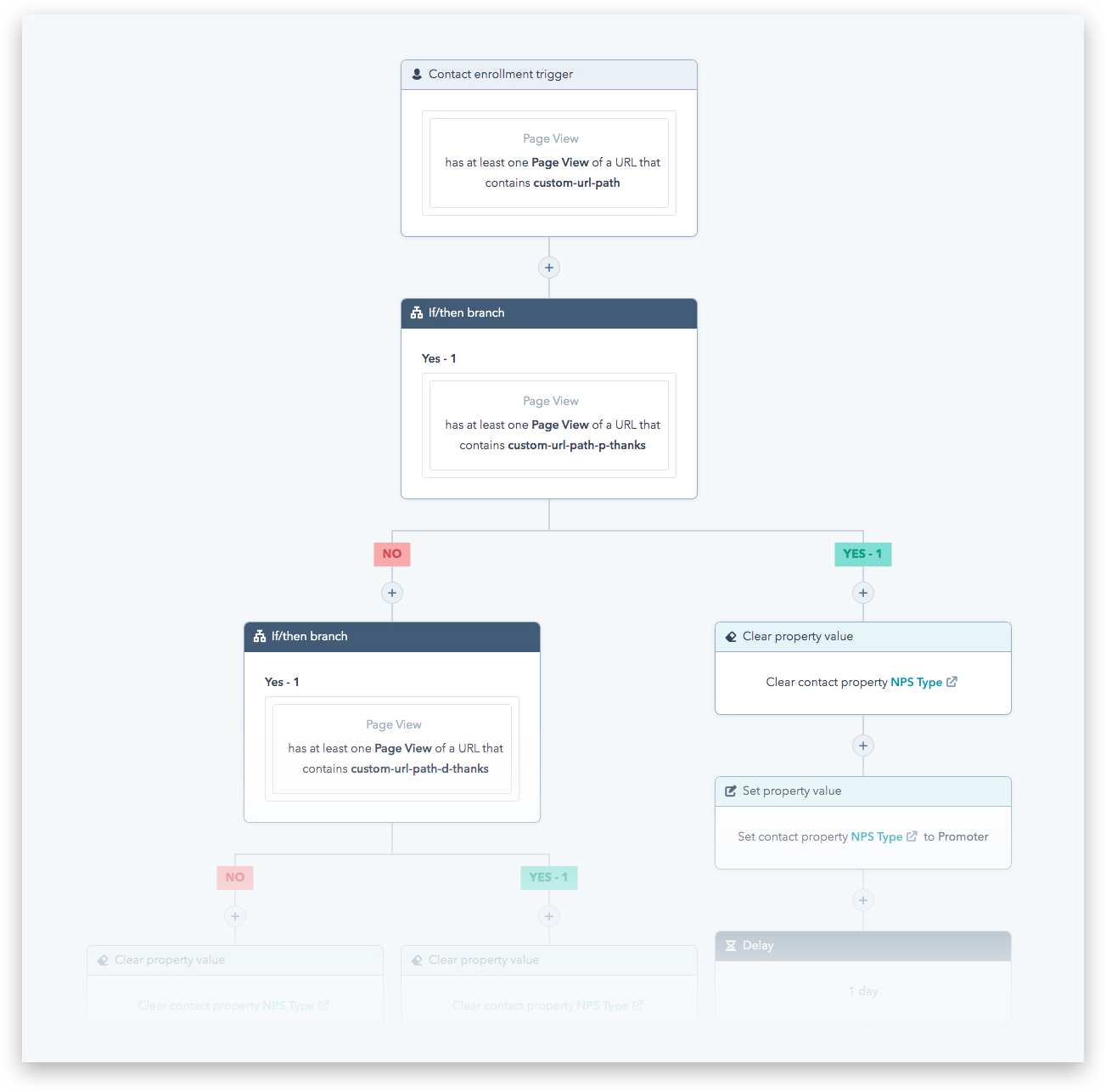
5. Post-Purchase Workflow
You would think once a customer makes a purchase that it’s time to take a deep breath and relax. Although that’s somewhat true, what happens after the purchase is arguably more important than the steps leading up to it.
They’ve now spent time getting to know your brand and offerings. They even felt compelled to go through the buying process and take a chance on you. Now it’s up to you to show them they made the right decision.
On top of making sure they receive their order, there are some other key items to include in your post-purchase workflows and processes. You want to keep in touch with them, find out how they’re feeling about their order and be sure to keep them in the marketing loop for future purchases.
Over the span of 30 days post-purchase, you should send the customer a couple of scheduled and automated emails from your side and offer them a few engagement opportunities outside the whole sales and marketing funnel.
For instance, you can request feedback on the buying process, ask for a product review, sign-up for a rewards account, or provide relevant social media links to explore.
Make sure to stay top of mind with them and avoid going dark. They’ve expressed interest in you, so you have the right to reach out to them. Keep the outreach simple, fun, and friendly.
Enrollment triggers: Purchase Date or Fulfillment Date
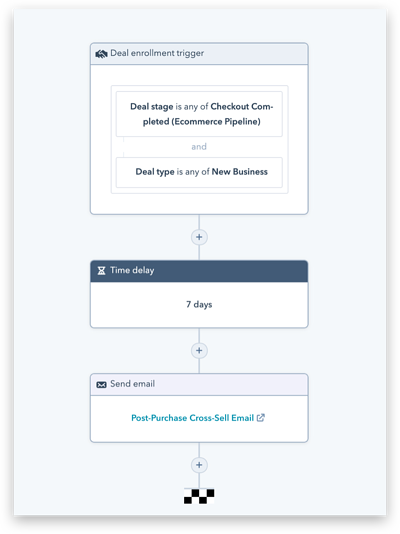
6. Internal Team notification workflow
So far, we’ve covered workflows that deal primarily with external factors. Now it’s time to focus on some Hubspot automaton that can be geared for internal team members.
There are a ton of ways to use HubSpot to keep your brand organized and avoiding manual processes.
You can have workflows centered around:
- Shipping and logistics
- Low inventory
- Partnerships and channel opportunities
- Product launches and GTM plans
- Deals in the pipeline
- Much, much more…
You can get creative with whatever fits your business. But, keep it simple and don’t overcomplicate. You don’t need one action to trigger multiple workflows or be overkill.
We’re going to layout an internal workflow based on a user’s behavioral actions on your website.
Each domain has its most important and highest traffic pages. Most are some combination of the home page, top sellers, clearance or sale items, or new products. It’s important for every business to have a good gauge on well-performing and under-performing pages.
The first thing you have to do is identify these conversion events and pages by making use of an attribution reporting tool (such as the one that HubSpot offers). Pay attention to the pages that mean most to your eCommerce business.
Here, utilize workflows to trigger and implement an email notification internally to your sales representative, informing them of high-value activities. One example could be if a potential wholesale account visits your partner page. Another might be if a prospect keeps opening an email regarding an upcoming sale.
Then, you can provide the sales representative with useful information they require about the lead or prospect in question, including useful middle-of-the-funnel and bottom-of-the-funnel content that they can send out to the prospect in their outreach mail. This practice enables you to connect your sales reps with the best possible prospects at the correct time.
Enrollment triggers: Certain URL visits, # of website pages
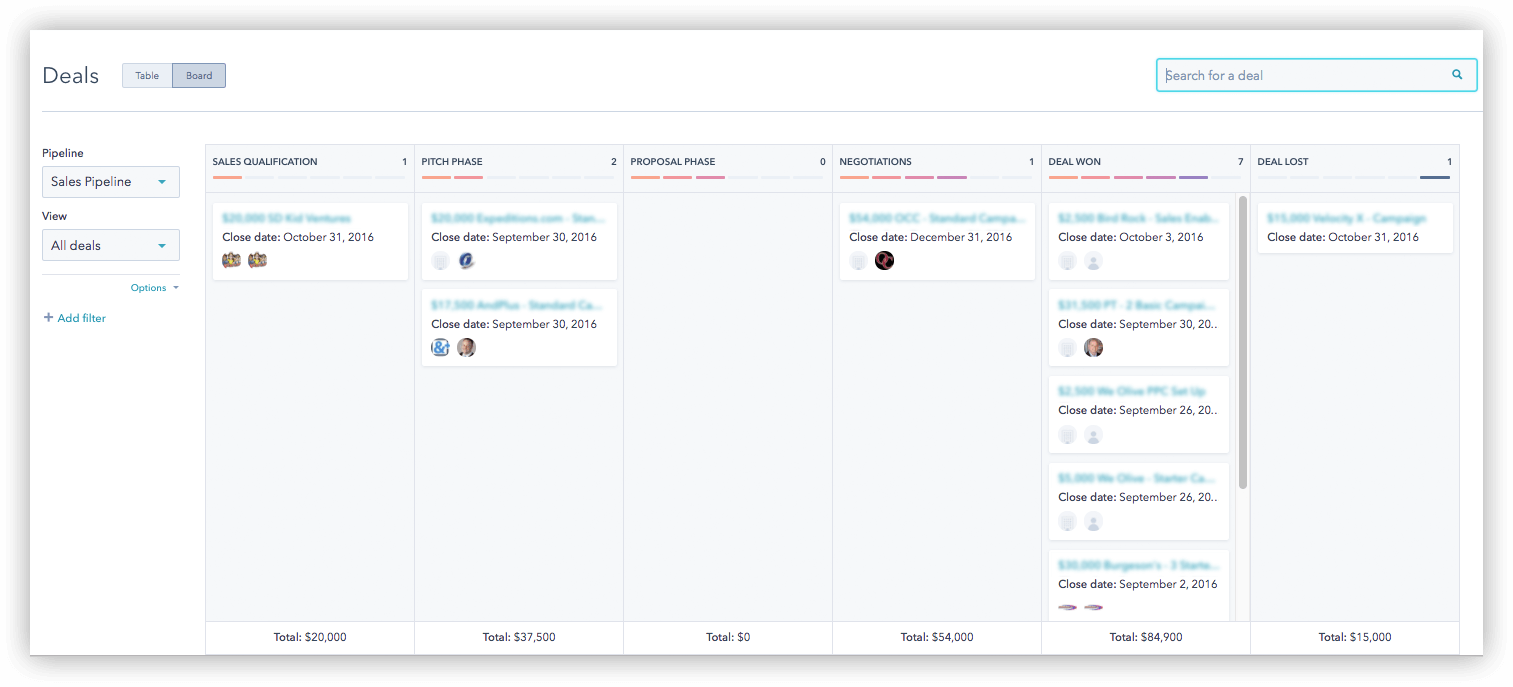
7. upcoming buying reminder workflow
This one will apply to some, but not all, eCommerce brands. Does your business model include those who generally buy on a certain cycle or a subscription?
Enter these individuals in a specific workflow (upcoming purchase reminder) that is automatically triggered when they buy something from your eCommerce brand.
This is a match made in automation heaven.
For example, let’s say that you are selling eye care products, and a consumer buys a 6-month supply of contacts from your brand. Put that consumer into this workflow, which automatically sends them an email about four months later as a convenient reminder that their 6-month supply is going to run out soon, and it may be the best time to place an order for a new set of prescription contacts.
You can even toss in a small discount for customers that re-order before their supply runs out. This gives them an incentive to not put it off and gives you another steady, loyal customer.
This will keep your revenue engine humming without lifting a finger.
Enrollment trigger: Purchase date, Subscription date
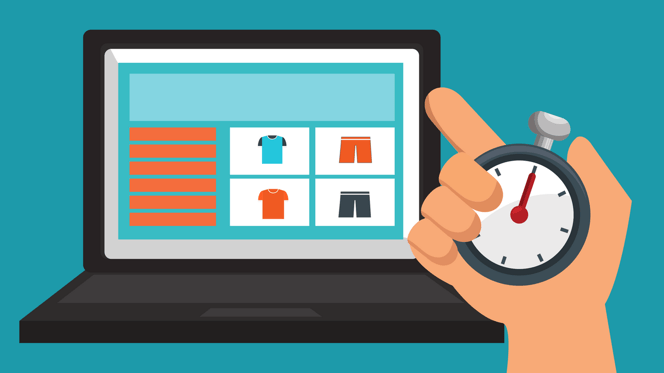
Conclusion
To summarize, with the help of automated HubSpot Marketing Workflows (similar to the ones mentioned above), you can deliver a more tailored experience to your customer base.
When you implement these workflows together for your eCommerce brand, you manage to greatly enhance customer experience beginning from before they become your customer, through the buying process and turning them into brand advocates.
A better customer experience translates into more sales for you, and that ensures the success of your eCommerce business!
Let us know in the comments if there are other workflows critical to your business.
Originally published May 18, 2021, updated August 25, 2021
Tags:
HubSpot
Workflows
Automation
.png)

